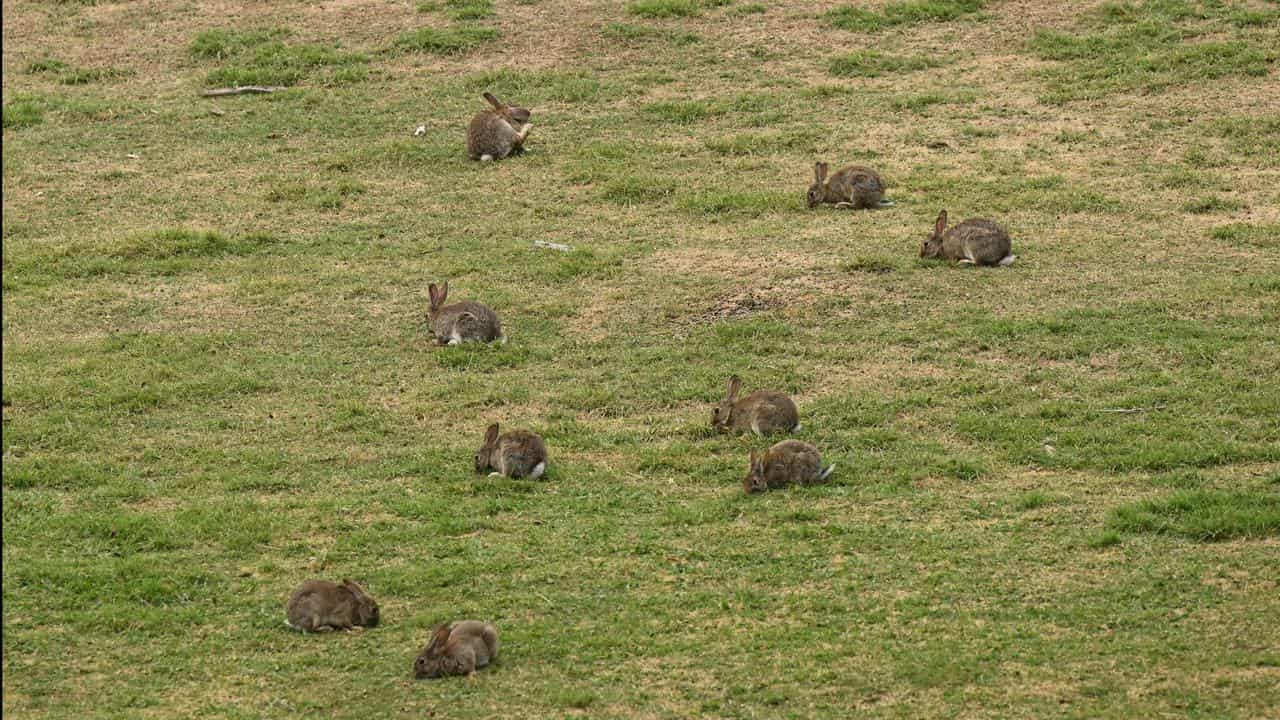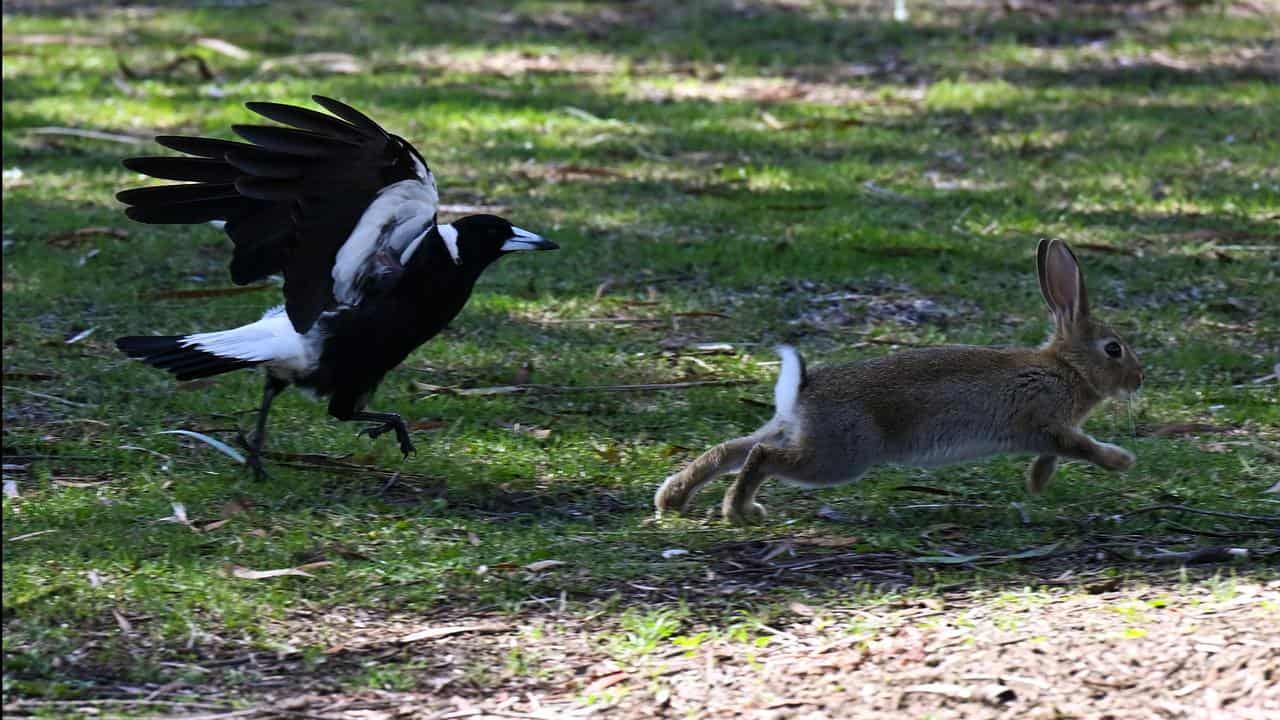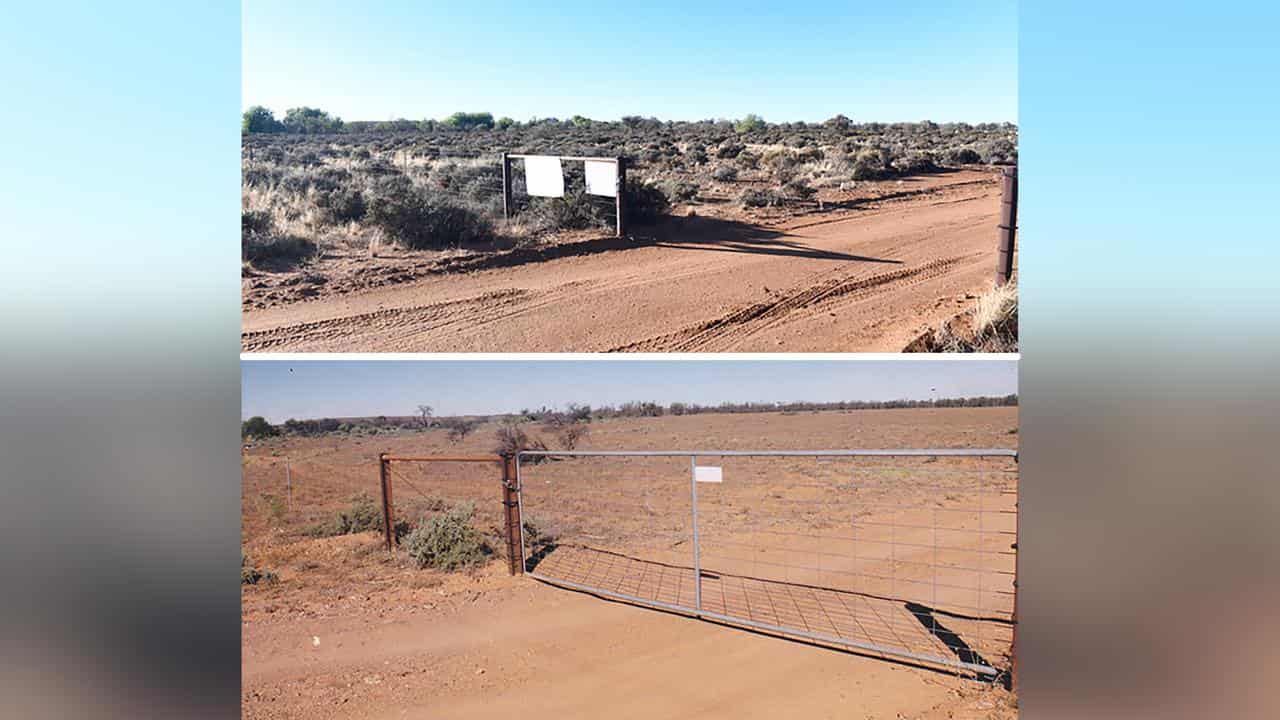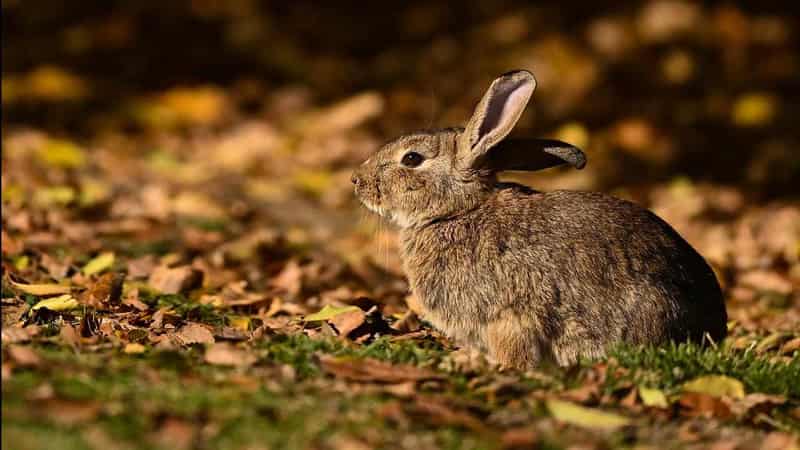
In Australia's bush capital, an army of pest control workers has been deployed to combat a warren of unwelcomed residents.
Authorities have been caught on the hop as rabbits do what they do best, and continue to breed.
"The wet conditions over the Canberra regions over the past few years (have) seen strong grass growth and consequently a significant increase in rabbit numbers," ACT environment minister Rebecca Vassarotti told AAP.

Further west, near Wagga Wagga in NSW, three wet summers has the region brimming with life.
But among the green shoots, a grey shadow is also moving across the land.
On Alistair Campbell's farm at Old Junee, rabbits "decimated" one of his canola crops, causing tens of thousands of dollars in damage.
"There's thousands of the things ... everywhere you go, you see the damned things," he said.
The numbers are so high that contract shooters are reportedly killing up to 600 rabbits in an hour.
"It's not uncommon for them to go out and get hundreds, if not thousands, of rabbits a night," Mr Campbell said.
"They just take a crop and they just demolish it, they start at the top and they just keep eating and eating and eating."
Dale Lane runs the Riverina Co-Op at Wagga Wagga and has seen sales spike over the past year for bait and ammunition targeting rabbits.
"It's all anecdotal ... but certainly a lot more crops and pastures have been eaten by rabbits in the last 12 months than the previous year or two," he said.
"We're consistently selling control options."
Across the country, on-ground management of rabbits falls to state and territory governments and land managers.
In NSW, rabbit numbers are up but authorities can't say by how much.
One pair of rabbits can become 184 rabbits in just 18 months.
"The use of poisons, biological control agents and physical removal of (shelters) are essential components of good rabbit management," said Mal Leeson from NSW Local Land Services.

At Australia's national science agency, researchers are developing a new rabbit control strategy.
The solutions inform a national approach to rabbit biocontrol research and innovation to keep numbers down.
"Biocontrol is really important, it's the only thing that works," CSIRO researcher Tanja Strive said.
"We need to invest in it and the strategy informs us how we can best do that."
Biological control of rabbits has been effectively used in Australia since the initial release of the myxoma virus in the 1950s.
Then between 2014 and 2016, the highly contagious calicivirus killed 60 per cent of Australia's rabbit population after spreading across the country within 18 months.
A decade later, the concern is that immunity to the deadly contagion has built up in the pest.
"We really need to continue researching these rabbit viruses ... as they co-evolve with the rabbits and become less effective," Dr Strive said.
There are two types of rabbit viruses circulating in the wild rabbit population, helping to suppress numbers.
And Dr Strive says researchers need to stay ahead of the viruses before they stop working completely.
"We're coming to the end of another 10-year cycle, and what that means is we really need to continue researching these rabbit viruses," she said.

Broken Hill farmer David Lord knows the damage that rabbits can cause.
Twenty years ago, the former chair of the Australian Wool Innovation rabbit advisory group tore up the burrows on his sheep farm to control the pest.
"We ripped out 28,000 warrens. Prior to the ripping programme, we were losing about 28 tonnes of vegetation per day," he said.
He's worried about what might happen if the pest returns.
"It would be an absolute environmental catastrophe if rabbits overcome the current viruses we've got," he said.
"There's sufficient rabbits in the environment for the population to make a comeback.
"I think we've dropped the ball already, and I'm dead scared."
Citizen science is playing its part to work out the most effective virus in killing the pest.
Samples of rabbit carcasses are being sent to CSIRO for scientists to work out a cause of death.
"It helps us get essential background data on which virus is active where and when, and how they evolve and how they interact with one another," Dr Strive said.
"We need to know what's going on if we consider biological control agents for current and future management."
Rabbits remain one of Australia's most damaging pests, causing around $200 million a year in agricultural damage and threatening more than 300 native and ecological communities.

Without biocontrol the damage bill would be five times that figure, according to Andreas Glanznig from the Centre for Invasive Species Solutions.
"Rabbits are both an agricultural as well as environmental disaster for Australia," he said.
"Rabbits and viral biocontrol agents are in an arms race ... if you're going to keep rabbit numbers in check, you've got to put out a new agent."









